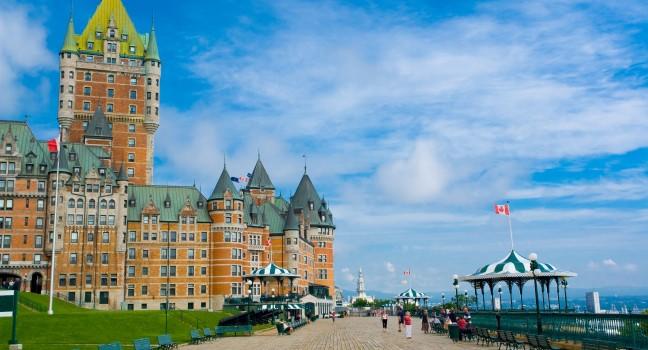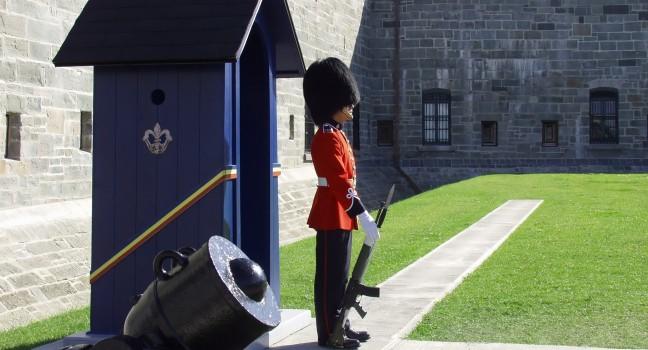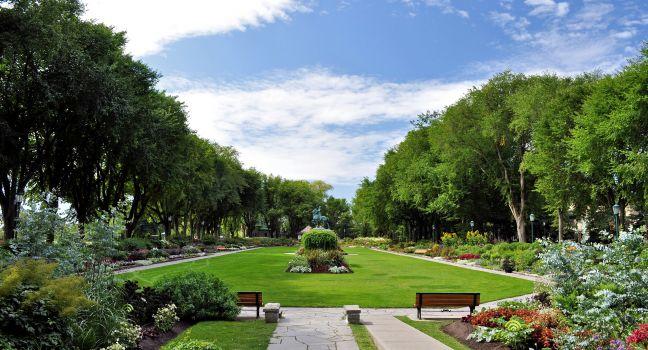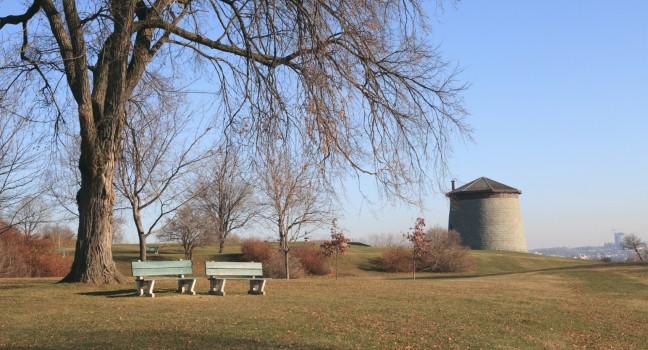Fairmont Le Château Frontenac

The most photographed landmark in Québec City. This imposing turreted castle with a copper roof owes its name to the Comte de Frontenac, governor of the French colony between 1672 and 1698. Samuel de Champlain was responsible for Château St-Louis, the first structure to appear on the site of the Frontenac; it was built between 1620 and 1624 as a residence for colonial governors. The original portions of the hotel opened the following year, one in a series of château-style hotels built across Canada to attract wealthy railroad travelers. It was remarkably luxurious for the time: guest rooms contained fireplaces, bathrooms, and marble fixtures, and a special commissioner purchased antiques for the establishment. The hotel was designed by New York architect Bruce Price, who also worked on Québec City's train station, Gare du Palais. The addition of a 20-story central tower in 1924 completed the hotel. Since then the Château, as it's called by locals, has accumulated a star-studded guest roster, including Prince William and Kate Middleton, Queen Elizabeth II, Princess Grace of Monaco, Alfred Hitchcock, and Ronald Reagan, as well as Franklin Roosevelt and Winston Churchill, who met here in 1943 and 1944 for two wartime conferences.
Visitors who can spend the night can book a guided visit of the hotel and learn more about its many secrets.







